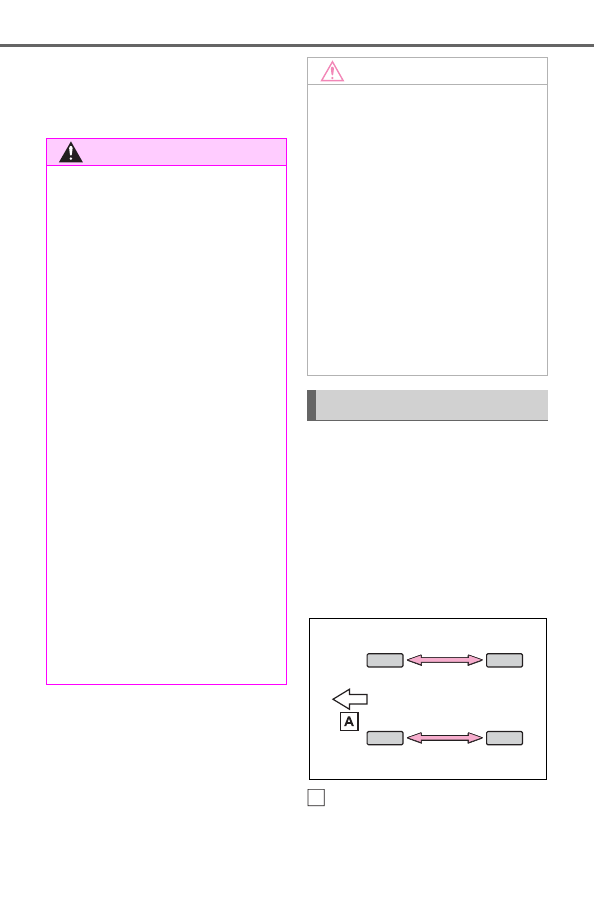Toyota RAV4 Hybrid (2021 year). Manual in english - part 10

592
7-3. Do-it-yourself maintenance
■
If the tread on snow tires wears
down below 0.16 in. (4 mm)
The effectiveness of the tires as
snow tires is lost.
Rotate the tires in the order
shown.
To equalize tire wear and extend
tire life, Toyota recommends that
tire rotation is carried out at the
same interval as tire inspection.
Do not fail to initialize the tire pres-
sure warning system after tire rota-
tion. (if equipped)
Front
WARNING
■
When inspecting or replacing
tires
Observe the following precautions
to prevent accidents.
Failure to do so may cause dam-
age to parts of the drive train as
well as dangerous handling char-
acteristics, which may lead to an
accident resulting in death or seri-
ous injury.
●
Do not mix tires of different
makes, models or tread pat-
terns.
Also, do not mix tires of remark-
ably different treadwear.
●
Do not use tire sizes other than
those recommended by Toyota.
●
Do not mix differently con-
structed tires (radial, bias-belted
or bias-ply tires).
●
Do not mix summer, all season
and snow tires.
●
Do not use tires that have been
used on another vehicle.
Do not use tires if you do not
know how they were used previ-
ously.
●
Do not tow if your vehicle has a
compact spare tire installed.
NOTICE
■
Driving on rough roads
Take particular care when driving
on roads with loose surfaces or
potholes.
These conditions may cause
losses in tire inflation pressure,
reducing the cushioning ability of
the tires. In addition, driving on
rough roads may cause damage
to the tires themselves, as well as
the vehicle’s wheels and body.
■
If tire inflation pressure of
each tire becomes low while
driving
Do not continue driving, or your
tires and/or wheels may be
ruined.
Tire rotation
A